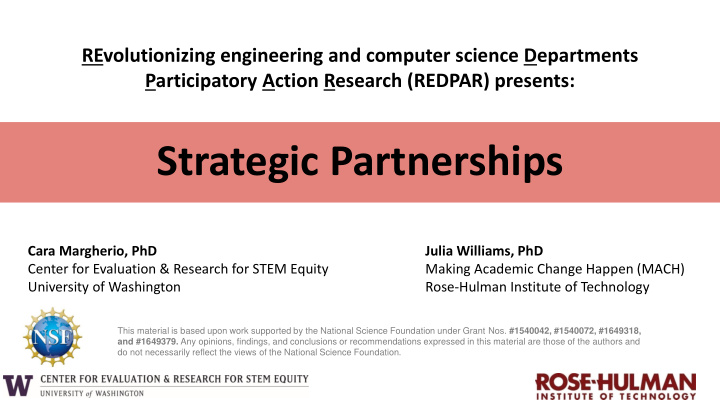



REvolutionizing engineering and computer science Departments Participatory Action Research (REDPAR) presents: Strategic Partnerships Cara Margherio, PhD Julia Williams, PhD Center for Evaluation & Research for STEM Equity Making Academic Change Happen (MACH) University of Washington Rose-Hulman Institute of Technology This material is based upon work supported by the National Science Foundation under Grant Nos. #1540042, #1540072, #1649318, and #1649379. Any opinions, findings, and conclusions or recommendations expressed in this material are those of the authors and do not necessarily reflect the views of the National Science Foundation.
Findings: Motivations RED teams have voiced a variety of reasons for building strategic partnerships: • • Find allies Navigate bureaucracy • • Attract resources Increase impact on their • Supplement skillsets campus • • Conceptualize plans Increase impact beyond their campus
First Activity: Identifying External Connections
Findings: Establishing Goals and Governance RED teams have worked to establish supportive frameworks for their strategic partnerships by: • Aligning goals and activities • Building on their partner’s strengths • Creating mutually beneficial relationships • Developing shared vision
Second Activity: Seeing from the Perspective of the Partner “Good partnerships are founded on trust, respect, mutual benefit, good communities, and governance structures that allow democratic decision-making, process improvement, and resource sharing.” Worrall, L. (2007). Asking the Community: A Case Study of Community Partner Perspectives. Michigan Journal of Community Service Learning , 14 (1), 5-17.
Third Activity: Making an Intentional Approach
Final Action Items
Recommend
More recommend